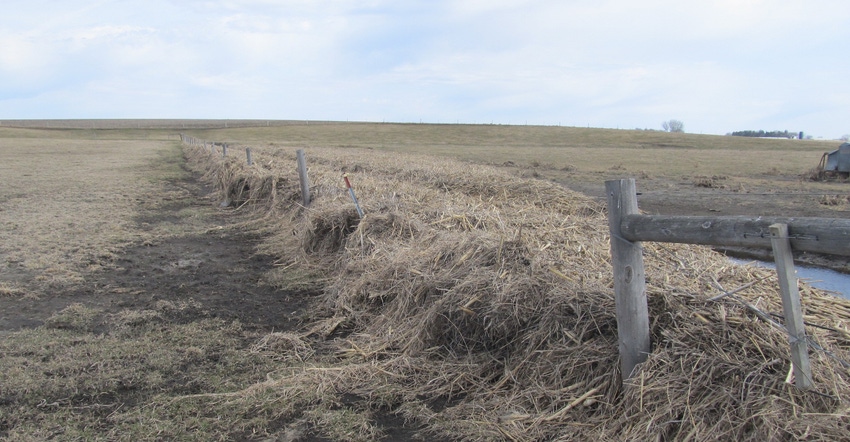April 4, 2019

Floodwaters are receding, but the challenges in recovery for farmers and livestock producers are just beginning. That's why Beth Doran, Iowa State University Extension beef specialist, says producers should get out in their fields as soon as possible.
“Beef producers should assess the damage to pastures and hay ground, and then check out possible disaster assistance,” she says.
Doran advises cattle producers to look for three things in their assessment: debris, silt on the forage, and thinned or dead forage plants. “Debris includes wire, metal and trash that may be injurious to animal health, and is usually found along fence lines and in the corners of fields,” she notes.
According to ISU Extension field agronomist Brian Lang, silt on forage is a big issue because it is unpalatable and could carry microbes affecting animal health.
“Ironically, we need rain to wash off the silt. This early in the season, it's likely more rain will come," he says. "Otherwise, if the forage was tall enough, you should chop silted forage back onto the field to encourage clean regrowth. By the time farmers are able to run equipment on a pasture or hayfield, visual assessment of forage species survival can be conducted and should be rather obvious.”
Whether the forage plants survived the flood depends on three factors: plant species, time under water, and how much of the plant was submerged. Some species, such as smooth bromegrass, orchardgrass, fescue and ryegrass, should grow through a moderate silt deposit of less than 2 inches and can withstand several days of flooding without injury.
Reed canarygrass can stand longer submersion than other perennial grasses; whereas, meadow bromegrass cannot tolerate any flooding.
Time under water affects the amount of oxygen available to the plant and is related to temperature, Lang says. Fortunately, during spring flooding, cooler temperatures allow plants to survive longer under water. Flash flooding — as opposed to standing water — increases survivability because the plants experience less oxygen depletion in moving water than still water conditions. Also, plants with more leaves above water are more likely to survive.
Help available from USDA
USDA’s Farm Service Agency administers the Emergency Conservation Program, which provides funding and technical assistance for farmers to rehabilitate farmland damaged by natural disasters. Pastureland and hay ground are considered eligible land under ECP.
Eligible practices pertaining to pastures and hayfields include debris removal (cleanup of woody material, sand, rock and trash on pastureland and hayfields) and restoring fences (livestock cross fences, boundary fences and livestock gates.)
Producers with pasture damage or hayfield damage are encouraged to contact their local FSA office to report the damage and determine if they are eligible for assistance. If the requirements are met, a formal application will need to be completed.
For more forage and pasture management information, visit iowabeefcenter.org.
Source: ISU, which is responsible for the information provided and is wholly owned by the source. Informa Business Media and its subsidiaries aren’t responsible for any of the content contained in this information asset.
You May Also Like




